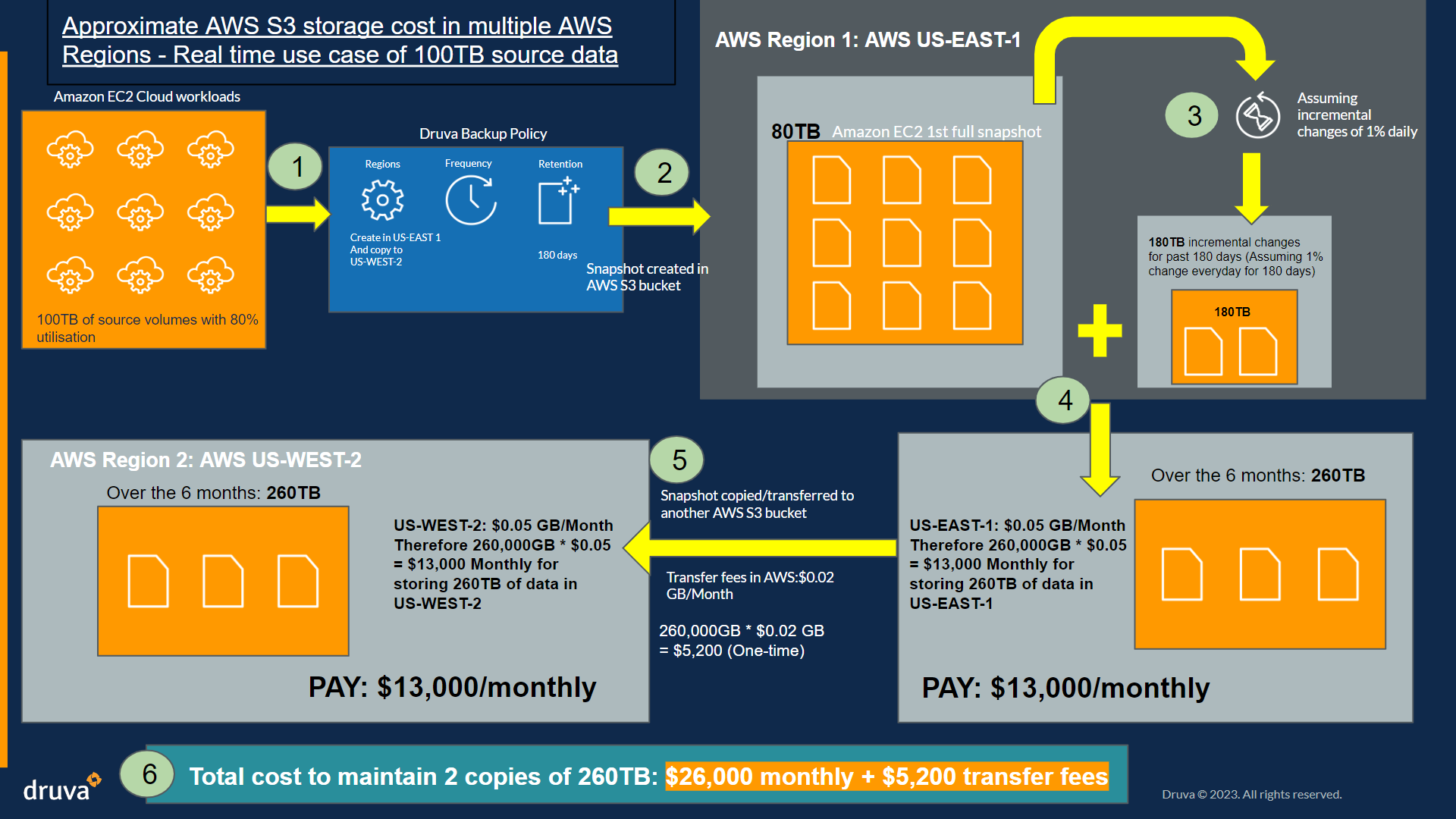Managing data has always played an essential role in technological innovation, and with the advent of AI and analytics, it has become even more critical. Data empowers innovation and helps businesses measure key metrics, enabling them to make data-driven decisions. However, managing data can be expensive and difficult, especially when dealing with an unimaginable amount of data in the AWS cloud. This is where Druva's solution for long-term retention of Amazon EC2 backups comes in, helping enterprises to store their data safely and cost-effectively.
The main focus of this post is the benefits of Druva's solution for the long-term retention of Amazon EC2 backups. This solution addresses the challenges of managing data in the AWS cloud allowing businesses to achieve a reduction in storage costs for the secure air-gapped Amazon EC2 backups for the long term.
Why Long-Term Retention (LTR) is crucial for Amazon EC2 Backups
After talking to our customers and industry experts who are heavy cloud adopters and rely strongly on Cloud infrastructure, we have identified six significant reasons to have a long-term retention (LTR) strategy for Amazon EC2 backups:
Cost
Retaining EBS snapshots incurs additional costs, such as storage and retrieval fees, which increase as the size and number of snapshots grow. Carefully considering the frequency and duration of retaining data is essential to minimize costs.
Compliance
Depending on your industry or business and organizational data retention policies, you may be required to retain data backups for a certain period of time to comply with legal or regulatory requirements.
Disaster recovery
Long-term retention ensures that you have access to data backups from an earlier point in time, which can be critical for disaster recovery scenarios.
Data retention policies
Your organization may have policies in place that require you to retain data and backups for a certain period of time, such as for statutory and auditing purposes or simply to ensure access to historical data.
Business continuity
In the event of a system failure or other disruption, having long-term backups can help you quickly restore critical systems and minimize downtime, which is especially important for businesses that rely heavily on technology to operate.
Historical analysis
Retaining backups over a longer period can allow you to perform historical analysis on your data, identifying trends, understanding patterns, and making data-driven decisions.




